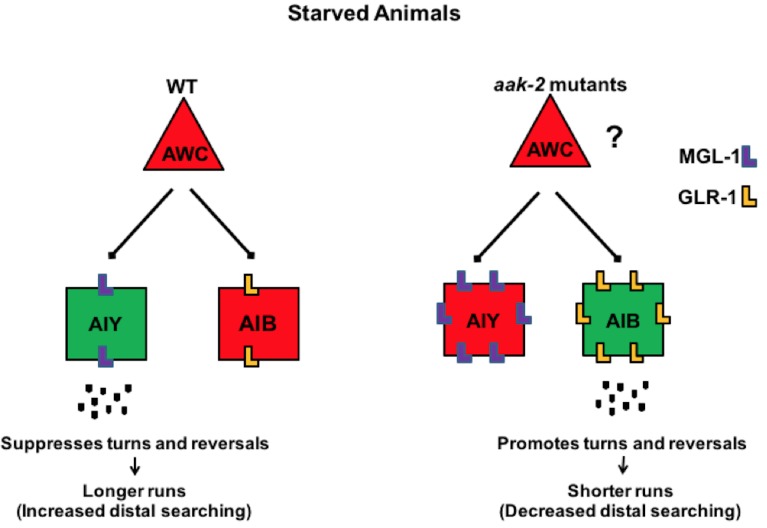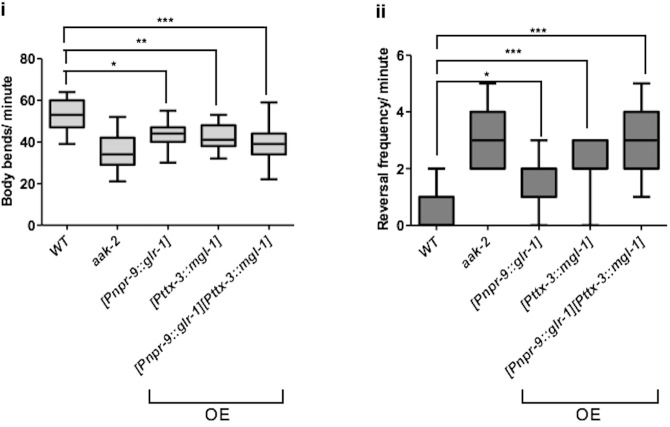Figure 8. AMPK coordinates neuronal activity of the AIB and AIY interneurons by regulating their glutamatergic synaptic inputs in response to acute starvation.
The schematic showing the proposed role of AMPK in the AIB and AIY interneurons for regulation of appropriate transition between local to distal exploration during starvation conditions. Green and red colos show depolarized and hyperpolarized neurons, respectively. AMPK regulates GLR-1-mediated synaptic inputs into AIB interneurons by directly phosphorylating GLR-1 and subsequently modulating its endocytosis and potentially its degradation leading to decreased AIB activity in starved animals. AMPK also regulates the MGL-1-dependent synaptic inputs into the AIY interneurons, not only through its effects on mgl-1 mRNA levels but also by direct phosphorylation of MGL-1 protein. These functions of AMPK within the AIB and AIY interneurons collectively result in the transition between local exploration that occurs in well fed animals to distal exploration that occurs in starved animals, thus allowing them to explore their environment more extensively for energy resources. Legends to figure supplements
DOI: http://dx.doi.org/10.7554/eLife.16349.031


